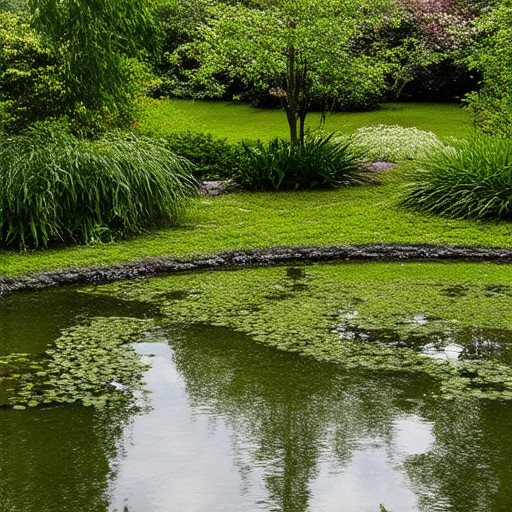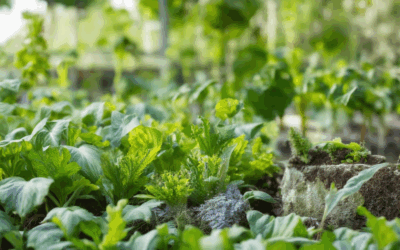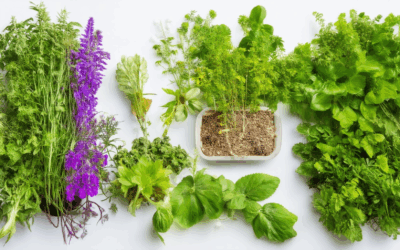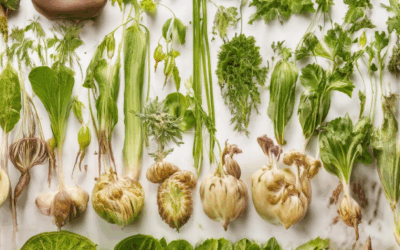Creating a beautiful and productive garden doesn’t have to mean spending countless hours of your weekends or overwhelming yourself with complex techniques. With low-impact gardening techniques, you can transform your outdoor space into a haven of beauty and functionality, all while minimizing effort and resources. Whether you’re a seasoned gardener looking for simpler ways to maintain your yard or a novice eager to get started, this guide will walk you through the essential strategies to master low-impact gardening. From the 70/30 rule to the 3-year planting plan and the secrets of Japanese gardening methods, we’ll explore proven approaches that prioritize sustainability and ease of care. Discover how to design a low-maintenance garden that thrives with minimal input, avoid common pitfalls faced by first-time gardeners, and learn how to leverage technology to simplify your routine. This article is your ultimate resource for creating a garden that looks great without requiring constant attention, ensuring you can enjoy the fruits of your labor for years to come.
Key Takeaways
- Divide perennials every three years to maintain healthy growth and control size.
- Space plants three feet apart to enhance airflow and reduce disease risks.
- Take three cuttings from one stem for higher propagation success rates.
- Use the golden ratio in garden design for efficient and aesthetically pleasing layouts.
- Incorporate geometric shapes into your garden for balance and visual interest.
The 70/30 Rule in Gardening
The 70/30 rule in gardening refers to the recommended ratio of organic matter to synthetic fertilizers in your gardening routine. This balanced approach aims to optimize soil health and plant growth while minimizing environmental impact.
According to this rule:
- 70% of your input should come from organic sources.
- 30% can be synthetic fertilizers, if needed.
This ratio ensures that your garden benefits from the slow-release nutrients provided by organic materials, which also improve soil structure and water retention. At the same time, it allows for the occasional use of synthetic fertilizers to boost nutrient levels without over-depleting your soil’s health.
When implementing this rule:
- Consider testing your soil regularly to determine its health and nutrient needs.
- Add organic matter like compost or manure to meet the 70% requirement.
- Supplement with synthetic fertilizers only as needed, focusing on micronutrients rather than excessive nitrogen.
- Monitor the results and adjust your approach based on observed changes in your garden’s productivity and soil condition.
This approach helps maintain a healthy, fertile soil ecosystem, promoting robust plant growth and sustainability in your garden.
What is the Gardening 3-Year Rule?
The gardening 3-year rule refers to the natural growth cycle of perennial plants. Here’s a breakdown of how it works:
- First Year – Establishing Roots :
In the first year, your perennials focus on establishing a strong root system. They may look sparse and not bloom much during this time. This is crucial for their long-term health and survival. - Second Year – Creeping and Spreading :
During the second year, your perennials begin to creep and spread. They might send out new shoots and roots, preparing for the next growing season. This is when they start to show more growth and development. - Third Year – Blooming Magnificently :
In the third year, your perennials reach their full potential. They produce abundant flowers, fruits, or foliage, providing beauty and productivity for years to come. This is often when they truly shine in your garden.
By following the 3-year rule, you can better understand and care for your perennials, ensuring they thrive in your garden for years to come. For more tips on growing perennials and maximizing their potential, visit our guide on Growing Perennials .
Keywords: gardening 3-year rule, perennial growth phases, plant care tips
What is the Japanese Technique of Gardening?
The Miyawaki Method, developed by Akira Miyawaki in the 1970s, is a unique approach to tree planting in Japan. This method focuses on selecting plants that are indigenous to the local environment, ensuring they thrive naturally without the need for extensive maintenance. By planting diverse species close together, the competition for sunlight accelerates the growth of young trees, creating a dense and resilient forest ecosystem.
Key Features of the Miyawaki Method:
- Native Plant Selection: The method emphasizes choosing plants perfectly suited to the local climate, soil, and ecosystem, ensuring maximum sustainability.
- Competitive Growth: Planting multiple species together encourages trees to grow quickly, as they compete for limited resources like sunlight and nutrients.
- Minimal Maintenance: This technique requires less intervention, making it ideal for large-scale projects and conservation efforts.
Benefits of the Miyawaki Method:
- Environmental Conservation: By restoring natural habitats, the method helps protect biodiversity and promotes ecological balance.
- Carbon Sequestration: Dense forests created through this method effectively capture and store carbon, contributing to climate change mitigation.
- Economic Viability: The method reduces long-term costs associated with tree maintenance, making it a cost-effective solution for landowners and developers.
Application Today:
The Miyawaki Method has gained international recognition for its effectiveness. It is widely adopted in Japan and has been adapted globally, including urban areas, to combat deforestation and promote sustainable land management. Old Seed, a leader in heirloom gardening and sustainable agriculture, highlights the importance of such techniques in preserving traditional farming methods and fostering environmental stewardship.
For more information on the Miyawaki Method and related sustainable gardening practices, visit Miyawaki Method official website . Explore Old Seed’s resources at Old Seed to learn about heirloom seeds and sustainable gardening techniques.
The Rule of 3 in Gardening
The Rule of 3 is a simple yet effective gardening principle that can significantly enhance your gardening efforts. Here’s how it works:
- Divide Perennials Every Three Years: Many perennials benefit from division every three years. This practice helps control their size, ensures healthy growth, and prolongs their lifespan.
- Space Plants Three Feet Apart: Planting trees, shrubs, and other plants three feet apart promotes better airflow, reducing the risk of fungal diseases and improving overall plant health.
- Take Three Cuttings from One Stem: When propagating plants, taking three cuttings from a single stem can increase your success rate and provide more plants for your garden.
By applying the Rule of 3, you can create a more organized, healthy, and productive garden space. Whether you’re dealing with perennials, spacing, or propagation, this rule offers a practical guide to achieving gardening success.
Most Common Mistakes of First-Time Gardeners
- Overwatering: New gardeners often water their plants too frequently, which can lead to root rot and waterlogged soil.
- Underestimating Sunlight Requirements: Many plants need full sun, and without enough light, they may struggle to grow properly.
- Ignoring Soil Preparation: Poor soil can hinder plant growth, and failing to prepare the soil correctly can lead to weak or diseased plants.
- Fertilizing at the Wrong Time: Applying fertilizer at the wrong time of year can harm plants or result in excessive growth that freezes in colder months.
- Not Recognizing Pests and Diseases: Early detection of pests and diseases is crucial, but many newcomers overlook these signs, allowing issues to escalate.
- Incorrect Plant Spacing: Placing plants too closely together can lead to overcrowding, poor air circulation, and increased susceptibility to diseases.
- Mistakenly Dividing Perennials: Dividing perennals at the wrong time or improperly can result in uneven growth and overcrowding.
- Starting Too Late in the Season: Some plants require a longer growing season to mature, and planting them late can reduce yield or beauty.
- Forgetting to Use Mulch: Mulching helps retain moisture, suppresses weeds, and regulates soil temperature, all of which are vital for healthy plant growth.
What is the Golden Ratio in Gardening?
The golden ratio, approximately 1.618, is a mathematical concept that often appears in nature and art. In gardening, this ratio can be thoughtfully applied to enhance the design and functionality of outdoor spaces. While commonly associated with art and architecture, the golden ratio finds practical applications in gardening, particularly in bed sizes, path layouts, and structural elements.
The golden ratio is often represented by the Greek letter phi (φ), and it can be expressed mathematically as:
[ \phi = \frac{1 + \sqrt{5}}{2} \approx 1.618 ]
In gardening, the golden ratio is sometimes used to determine proportions in raised beds, pathways, and other features. For example, a golden rectangle (a rectangle with sides in the golden ratio) can be used to create beds that maximize space efficiency while maintaining aesthetic appeal.
Applications of the Golden Ratio in Gardening:
- Raised Bed Dimensions :
- A common approach is to use a golden rectangle for raised beds. The shorter side of the rectangle corresponds to the longer side of the bed, maintaining the golden ratio. This proportion allows for efficient use of space and creates visually pleasing designs.
- Pathway Layout :
- Garden paths can be designed using the golden ratio to create a harmonious look. By spacing stones or pavers in a golden ratio, the pathway becomes both functional and aesthetically pleasing.
- Pergola and Arches :
- The golden ratio can influence the design of pergolas and arches. These structures often incorporate geometric shapes that reflect the golden ratio, adding a touch of elegance to the garden.
- Fencing and Gates :
- Fences and gates can also be designed with the golden ratio in mind. This ensures that the structures complement the overall layout of the garden while providing necessary functionality.
Tips for Incorporating the Golden Ratio:
- Use String Guides : When planning garden beds or pathways, tie strings at intervals based on the golden ratio to ensure precise measurements.
- Geometric Shapes : Incorporate geometric shapes like circles and triangles, which naturally align with the golden ratio, to create interesting visual effects.
- Natural Landscaping : Apply the golden ratio to natural landscaping features, such as water features or mounds, to create balanced and visually appealing designs.
By thoughtfully applying the golden ratio to your gardening projects, you can create spaces that are both functional and aesthetically pleasing. This ratio offers a unique way to bring order and beauty to your outdoor environment.
Conclusion
The golden ratio is a fascinating concept that can be effortlessly integrated into gardening designs. Whether through bed sizes, pathways, or structural elements, the golden ratio adds a touch of natural beauty and functionality to your garden. Experiment with these ideas and enjoy the transformative effect it has on your outdoor space!








0 Comments